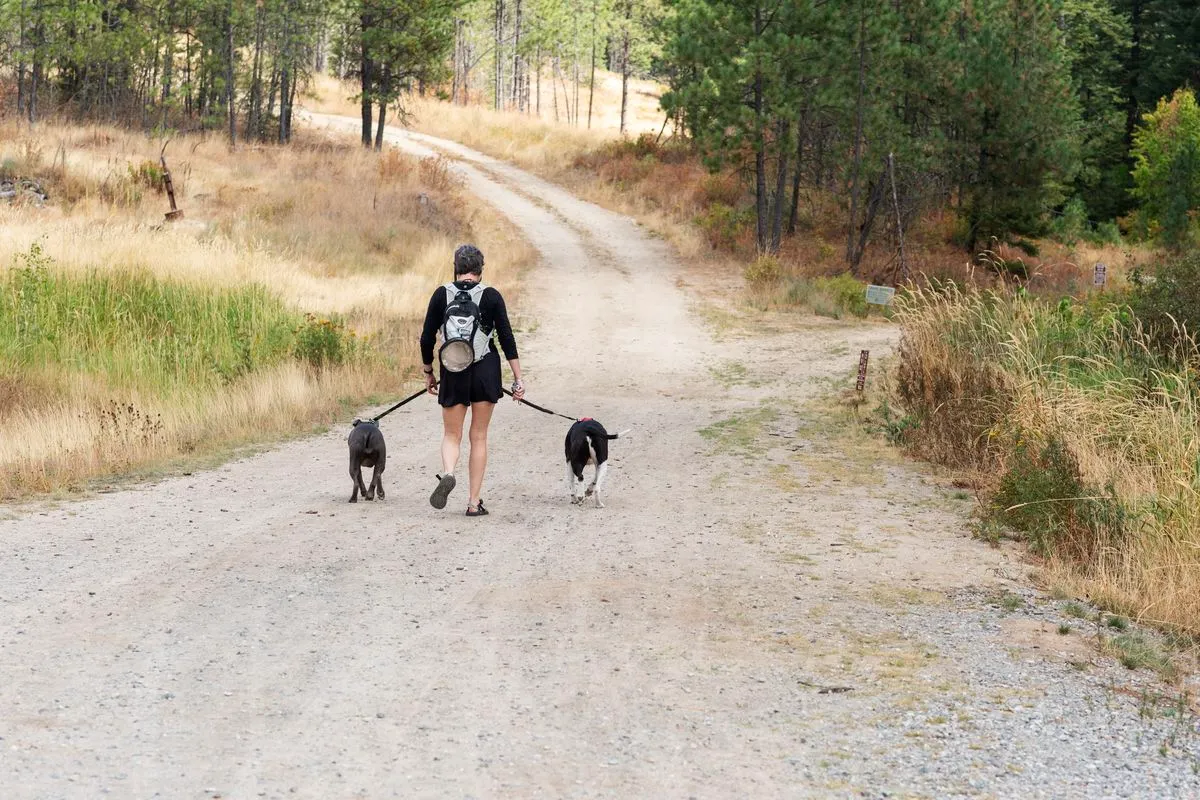Exploring nature solo is a liberating adventure, but it demands preparation and awareness. At National Park Shops, we believe that knowing essential hiking alone safety tips transforms your solo hike from a risky endeavor into an empowering experience. This guide will equip you with expert strategies to stay safe while enjoying the unmatched tranquility of solo hiking. Whether you're a seasoned trekker or a first-time solo hiker, these hiking alone safety tips ensure your journey is not just memorable, but also secure.
Benefits of Hiking Alone
Hiking solo is not just about seeking precautionary advice, it’s about embracing the unmatched rewards of personal exploration. Many outdoor enthusiasts turn to hiking alone safety tips to ensure a safe yet deeply personal journey that offers peace, focus, and empowerment.
Here are the key benefits of hiking alone:
-
Deep Self-Reflection: Solo hiking allows you to connect with nature and your inner thoughts without distractions, fostering mindfulness.
-
Independence and Confidence: Navigating trails on your own builds self-reliance and sharpens decision-making skills.
-
Personalized Pacing: You set your own rhythm, take breaks whenever you choose, and explore on your terms.
-
Enhanced Problem-Solving Skills: Facing trail challenges alone enhances your ability to assess situations and adapt calmly.
By applying essential hiking alone safety tips, you can minimize risks and fully experience the therapeutic aspects of solo treks. Without conversation distractions, your senses heighten, allowing you to hear rustling leaves, spot subtle wildlife movements, and immerse yourself in the environment. This heightened awareness promotes mental clarity and stress relief. With proper preparation, solo hiking transforms into an empowering, soul-refreshing adventure that nurtures both your physical and mental well-being.
>> Read More: 10 Best Family-friendly Hiking Trails To Take with Kids
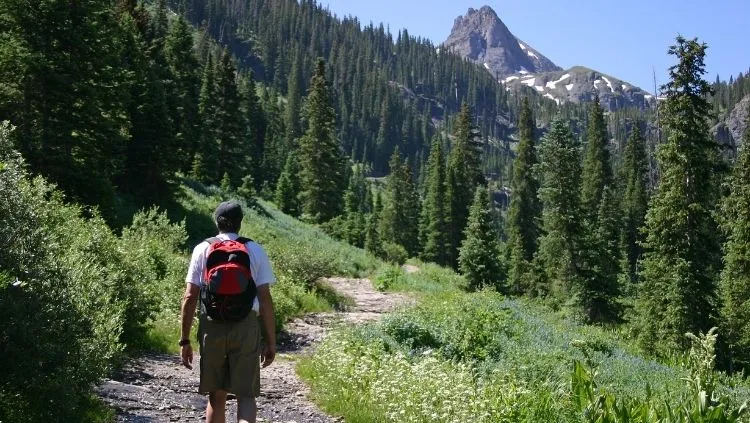
What I Learned from Solo Hiking
Throughout my solo hiking experiences, I've discovered that implementing practical hiking alone safety tips is the foundation of a successful and enjoyable adventure. One key lesson is the importance of self-reliance; when you're alone, every decision counts, and there's no one to lean on if things go awry. This responsibility sharpens your judgment and enhances your ability to assess risks on the trail. Equally valuable is learning to trust your instincts and remain calm in unforeseen situations.
Solo hiking has also taught me the significance of meticulous preparation. From checking trail maps to packing survival essentials, every detail matters. Another profound takeaway is the appreciation of solitude, without the chatter of companions, the sounds of nature become vivid, and introspection feels natural. However, these benefits are only fully realized when hiking alone safety tips are consistently applied. Staying vigilant, informed, and equipped transforms solo hikes from intimidating to invigorating.
The Hiking Alone Safety Tips
Before embarking on a solo adventure, it's essential to familiarize yourself with crucial hiking alone safety tips that will keep you protected, prepared, and confident. Solo hiking demands a higher level of self-awareness and preparation, and these tips serve as your checklist for minimizing risks while maximizing the rewards of hiking alone.
Know Your Hiking Abilities and Limits
One of the most crucial hiking alone safety tips is to honestly assess your fitness level, experience, and comfort in outdoor settings. Solo hiking demands both physical endurance and mental resilience, so it’s essential to select trails that align with your current abilities. Overestimating your skills can lead to dangerous situations where you’re too fatigued or unprepared to handle unexpected challenges.
Understanding your limits allows you to plan realistic itineraries, avoid risky terrain, and conserve energy. Start with shorter, well-marked trails and gradually progress to more challenging routes as your confidence grows. Regular self-assessment ensures you're continuously aware of your capabilities. Remember, solo hiking isn’t about proving toughness; it’s about making wise choices that prioritize safety.
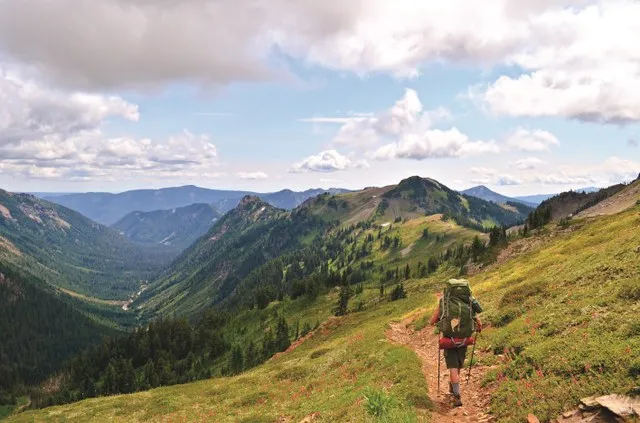
Research and Choose Your Hike
Thorough research is a non-negotiable part of effective hiking alone safety tips. Before setting out, gather detailed information about potential trails, including distance, elevation gain, trail difficulty, and estimated time to complete. Look for recent reviews or reports on trail conditions from local hikers or park services.
Consider factors such as wildlife activity, water sources, and available facilities like restrooms or shelters. Choose trails that match your experience level and are well-traveled, which increases the likelihood of encountering other hikers in case of emergency. Understanding every aspect of your chosen hike enhances your preparedness and boosts confidence during your solo adventure. Informed decisions are the backbone of safe solo hiking.
>> Read More: The 19 Best Hiking Trails in the US: Perfect for Adventure
Choose a Trail You've Hiked Before
Among the most practical hiking alone safety tips is to select a trail you are already familiar with, especially if you are new to solo hiking. Familiarity with a trail's terrain, landmarks, and potential hazards reduces uncertainty and helps you stay oriented. This comfort level makes solo hiking less intimidating and allows you to focus on your surroundings rather than navigation concerns.
Revisiting a trail enables you to gauge your progress easily and recognize when something seems off-route. It also minimizes surprises like unexpected obstacles or unclear trail markers. As you build confidence through familiar trails, you can gradually venture into new paths with a more developed sense of solo navigation. Starting with known routes ensures a safer and more enjoyable hiking experience.
Research Trail Conditions
Staying updated on current trail conditions is a pivotal hiking alone safety tip that can prevent unexpected challenges. Weather events, fallen trees, or trail maintenance can significantly alter the trail landscape, making parts impassable or dangerous. Checking official park websites, ranger stations, or trail community forums provides valuable real-time insights.
Trail conditions can also affect your choice of gear, clothing, and footwear. For example, muddy or icy trails may require traction aids, while dry and dusty paths necessitate extra hydration planning. Being informed allows you to adjust your hike accordingly, ensuring you’re fully prepared for the environment you’ll encounter. Preparedness transforms potential hazards into manageable obstacles.
>> Read More: How To Start Hiking: A Detailed Guide for Beginners
Bring a Map
No matter how tech-savvy you are, one of the essential hiking alone safety tips is to always carry a physical map of the area. Technology can fail, batteries drain, signals drop, and devices can malfunction, making a reliable paper map a critical backup. Knowing how to read topographic maps enhances your navigation skills and increases self-reliance.
Keep the map in a waterproof case to protect it from moisture and damage. Study the route beforehand and mark key landmarks, junctions, and potential bailout points. Combining map usage with compass skills adds another layer of safety. By integrating traditional navigation methods, you’re prepared for any scenario, no matter how advanced your gadgets are.
>> Read More: GPS vs. Map Navigation: Advantages and Disadvantages
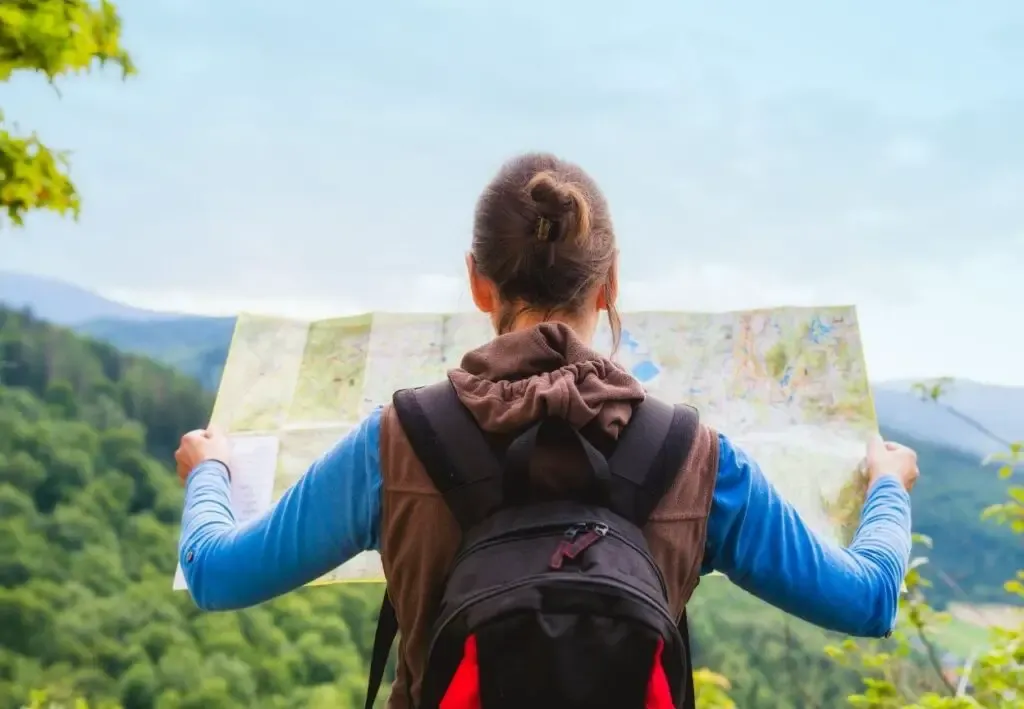
Check the Weather
Monitoring weather forecasts is among the top hiking alone safety tips that should never be overlooked. Weather can change rapidly, especially in mountainous or forested regions. Sudden storms, high winds, or temperature drops can turn a routine hike into a hazardous situation.
Before setting out, check multiple weather sources for the most accurate predictions. Pay attention to warnings about flash floods, lightning, or extreme heat. Adjust your plans if the forecast is unfavorable; postponing a hike is far safer than facing severe conditions unprepared. Dressing in layers and packing weather-appropriate gear ensures you're ready for sudden shifts. Weather awareness is a fundamental aspect of safe solo hiking.
Charge & Bring Cell Phone
A fully charged cell phone is an indispensable tool in any hiking alone safety tips checklist. Smartphones not only provide communication but also serve as navigation aids, emergency beacons, and information hubs. Always begin your hike with a fully charged phone and carry a portable power bank to extend battery life.
Enable offline maps and emergency SOS features before departing, especially in areas with limited reception. Keep your phone stored in a waterproof case to protect it from rain, dust, or accidental drops. While technology should never replace traditional navigation skills, it remains a vital support tool for solo hikers. Staying connected increases your security and response capability.
Make People Aware of Your Hiking Plans
Informing a trusted friend or family member of your hiking itinerary is one of the most critical hiking alone safety tips. Share details like the trail name, expected start and end times, and any planned stops. Set a check-in schedule and agree on steps to take if you fail to report back by a certain time.
Having someone aware of your plans ensures that help can be summoned promptly if something goes wrong. Provide information on your vehicle description, emergency contacts, and the equipment you're carrying. This simple precaution drastically reduces response time in emergencies. Communication and accountability are essential components of safe solo hiking.
>> Read More: How To Read Hiking Trail Signs: Symbol Meanings
Pack Snacks
Maintaining your energy levels is vital during solo hikes, making “pack snacks” a fundamental hiking alone safety tip. Choose lightweight, high-calorie snacks like trail mix, energy bars, jerky, or dried fruits. These foods provide sustained energy bars and are easy to eat on the go.
Pack more than you think you’ll need; unexpected detours or delays can extend your time on the trail. Include electrolyte-rich items to stay hydrated and maintain stamina. Balanced nutrition supports mental alertness and physical endurance, both crucial for solo hikers. Proper fueling is as important as gear preparation when venturing out alone.
>> Read More: What is the best snacks for mountain climbing?
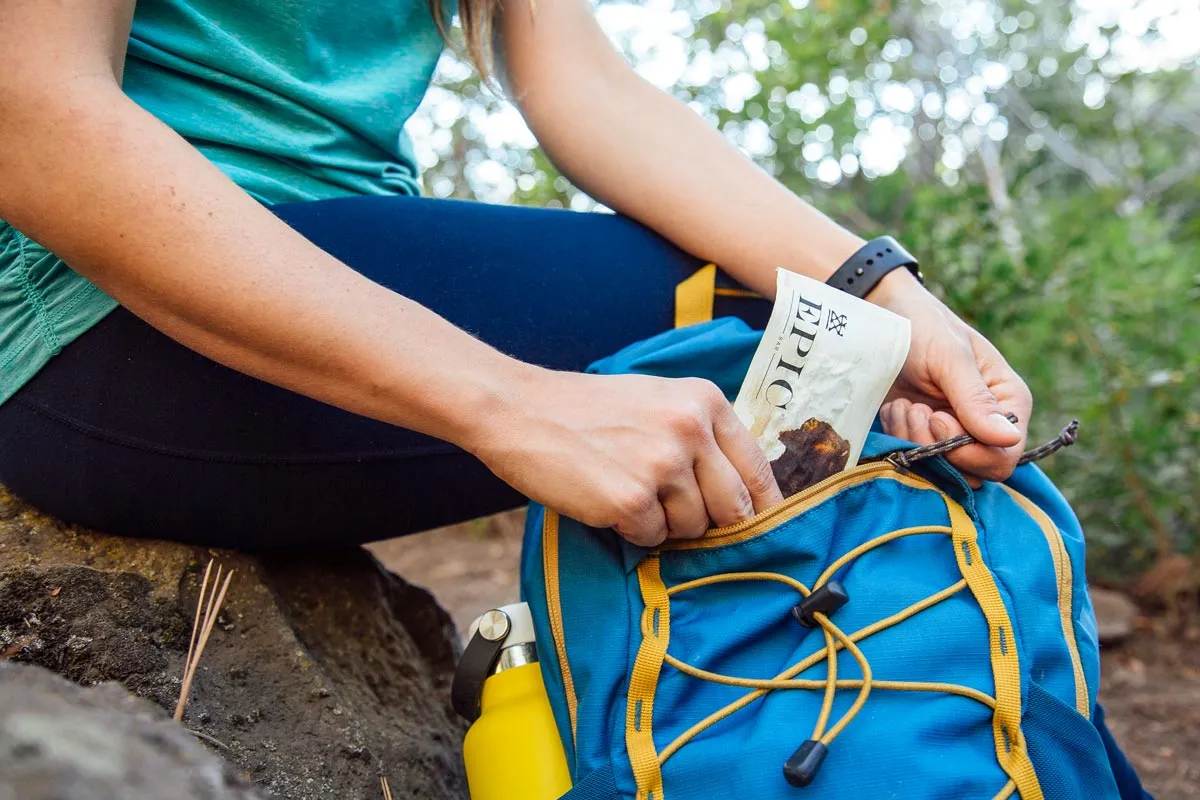
Pack Extra Protection
Bringing extra protective gear is a proactive hiking alone safety tip that prepares you for various situations. Essentials include a compact first aid kit, multi-tool, headlamp, emergency blanket, and a whistle. Depending on the terrain, consider carrying pepper spray or a personal alarm for added security.
Sun protection items like hats, sunglasses, and sunscreen should also be in your pack. Having extra layers or rain gear ensures you're ready for temperature changes or sudden showers. Packing extra protection equips you to handle minor injuries or unforeseen hazards with confidence. Being over-prepared is always preferable to facing emergencies unarmed.
Limit Phone Time While Hiking
While your smartphone is a crucial safety tool, one of the key hiking alone safety tips is to limit its usage during the hike. Excessive phone use drains battery life, which could be critical in an emergency situation. Preserve power by turning off non-essential apps and keeping the device on airplane mode when not in use.
Limiting phone time also helps you stay present and attentive to your surroundings. Being mindful of trail conditions, wildlife, and navigation markers enhances safety and enriches your hiking experience. Strike a balance between using technology as a tool and remaining engaged with your environment. Responsible phone usage extends your device’s availability for when it’s truly needed.
Get a Dog
For those who enjoy companionship and added security, bringing a well-trained dog is an effective hiking alone safety tip. A dog’s heightened senses can alert you to wildlife, unfamiliar sounds, or approaching individuals. They can also provide emotional comfort, reducing feelings of isolation on solo hikes.
Ensure your dog is conditioned for hiking, carries its own essentials, and remains under control at all times. Practice trail etiquette, and respect leash laws to maintain safety for both your pet and other hikers. A loyal canine companion adds both joy and a layer of protection to your solo hiking adventures.
>> Read More: Dog Friendly National Parks: Best U.S. Parks to Visit
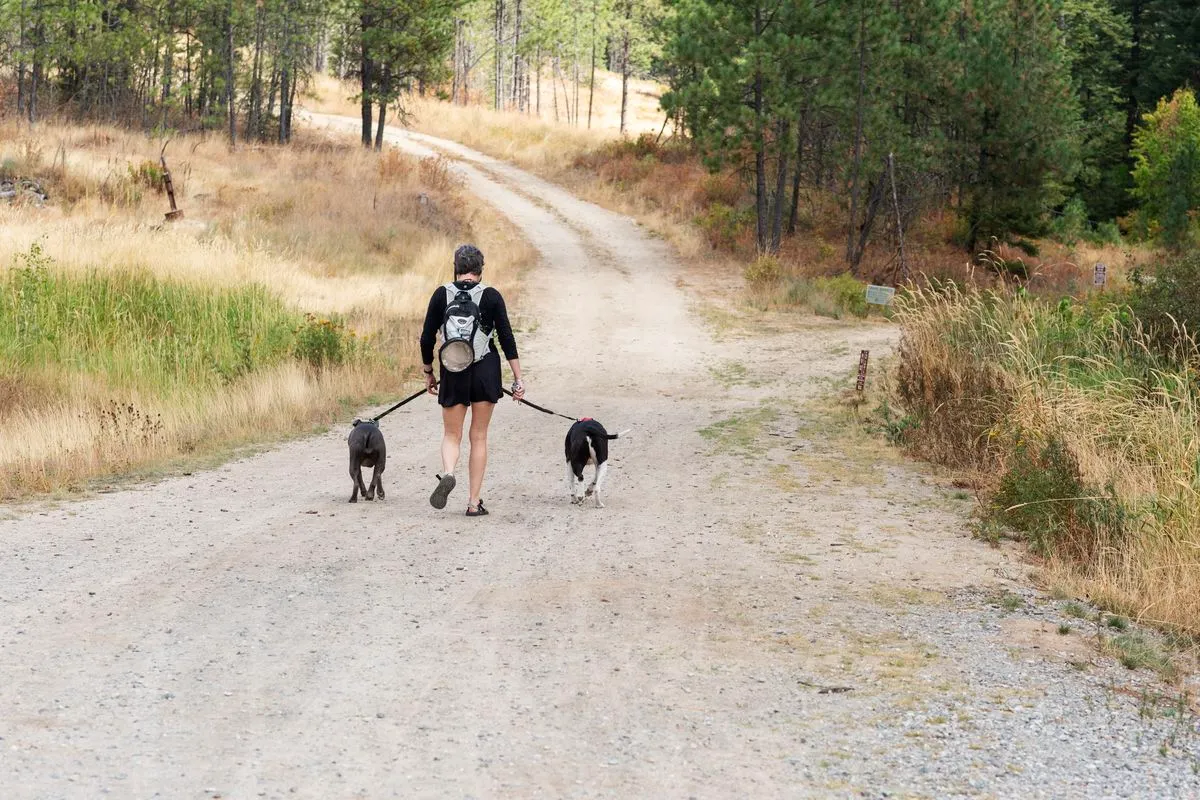
Stay Aware
Maintaining constant awareness of your environment is the cornerstone of all hiking alone safety tips. Stay alert to trail markers, terrain changes, wildlife movements, and weather shifts. Avoid using headphones, as they limit your ability to hear important sounds like rustling animals or approaching hikers.
Practicing situational awareness helps you react swiftly to potential hazards and navigate confidently. Regularly scan your surroundings and trust your instincts if something feels off. A proactive mindset is your best defense against unexpected challenges. Staying aware transforms a solo hike into a safe, enriching journey.
Conclusion
Solo hiking offers unparalleled freedom and personal growth, but it demands a high level of preparedness and vigilance. By adhering to these comprehensive hiking alone safety tips, you ensure that each solo adventure is both enjoyable and secure. From understanding your limits and planning meticulously to staying aware and packing smartly, every precaution contributes to a safer experience.
Combining thoughtful preparation with real-time awareness empowers solo hikers to explore confidently and responsibly. Embrace the solitude, appreciate the journey, and always prioritize safety above all. With these hiking alone safety tips in practice, solo treks can be some of the most rewarding and transformative experiences of your life.
>> Read More:

